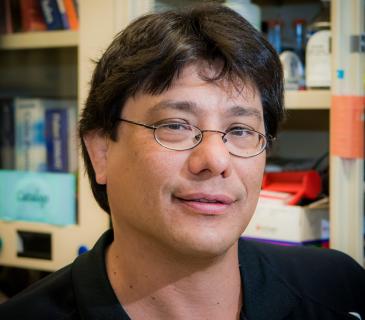
William T. Lee, Ph.D.
Research Interests
A long-term research focus has been the generation of immunologic memory. The T cells which are responsible for immunologic memory differ, both phenotypically and functionally, from naive T cells. Memory T cells play a central role in all aspects of immunity including vaccine function, diminished immunity in aging, immune dysfunction and autoimmunity. Most of my past research has involved the characterization of the differences between antigenically naive and memory T helper cells at the developmental, phenotypic, and functional levels. I have had a special interest in studying the differential susceptibility of naive and memory T cells to activation and tolerance signals.
Another project in the laboratory has been the characterization of the immune system of bats. Bats play an important role in many zoonotic diseases and have unique, but understudied, immune features enabling co-existence with numerous pathogens. A primary effort in my research is to develop reagents useful for identifying specific immune cells and molecules of bats.
For the last several years, I have also been highly involved in clinical serology, helping to administer the Diagnostic Immunology Laboratory (DIL). The DIL serves as a reference laboratory and also does primary serology testing for exposure to infectious agents with a particular emphasis on vector-borne diseases and vaccine preventable diseases. The laboratory plays a major role in serology testing for disease outbreaks affecting New York residents and, over the last several years, has been highly involved in the public health responses to the Zika virus and the measles outbreaks.
In particular, beginning in the spring of 2020, the DIL has done substantial serology testing for antibodies to SARS-CoV-2 to meet the needs of New York residents during the COVID-19 global pandemic. In addition to testing patient samples, the DIL has a robust research program centered on the evaluation of new serology assays as they become available and in the development of novel new assays to meet emerging testing needs. In 2020, the DIL developed and received FDA Emergency Use Authorization for a novel multisphere immunoassay (MIA) to detect antibodies reactive with SARS-CoV-2. To date, the MIA has been used to test specimens from >27,000 individuals. As COVID-19 serology has evolved, DIL applied research has worked to better characterize the antibody response to SARS-CoV-2 to both better understand the host response to infection and also to improve assays and testing parameters.